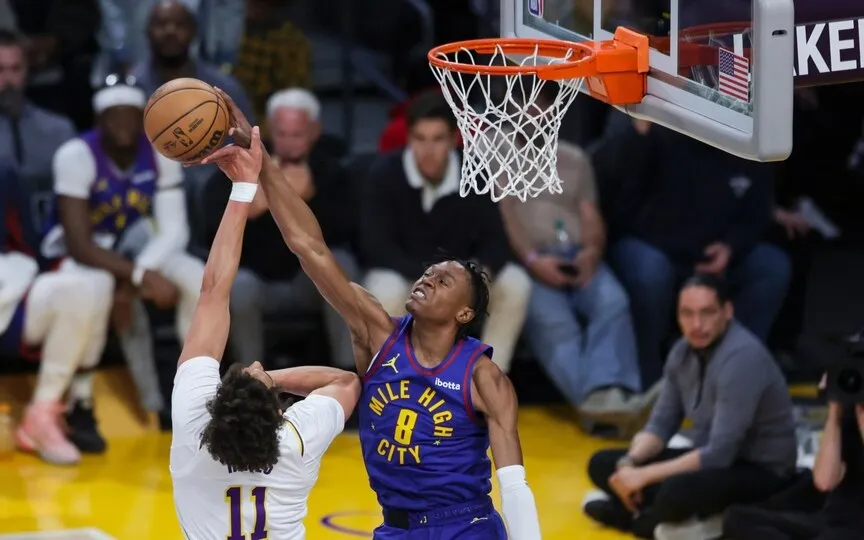Artificial intelligence could surpass sports analytics in numbers
The sports analytics community may find themselves in the minority when it comes to artificial intelligence. Those who revolutionized sports by eliminating the sacrifice bunt and emphasizing 3-point shooting in the NBA are uncertain about the impact of AI on the sports industry, both in management and on the playing field.
“I have been involved in information technology for a long time. That’s the first thing we don’t understand,” Philadelphia 76ers president Daryl Morey said Friday at the MIT Sloan Sports Analytics conference.
“It’s confusing,” Morey said. “We’ve actually now created something with 0’s and 1’s where each step has been created, but we don’t understand the results.”
Every year, the MIT conference brings together thousands of sports geeks who abandon their data models on hot topics like diversity, gambling, or reversing the slowing pace of baseball games. But this year’s meeting had a clear focus on AI, with panels and working papers discussing the potential of generative AI to transform sports.
One talk discussed baseball strategy, another how to provide Olympic content to more than 200 countries competing in four dozen different sports, and a research paper used artificial intelligence to provide player tracking data for a soccer broadcast.
Morey, a conference co-founder, participated in a panel titled “Winning with AI: The Future of AI in Sports.” The discussion covered potential improvements in scheduling, player safety, advertising, ticketing and broadcasting that will turn the action on the field into a Disney cartoon.
Kevin Lopes, ESPN’s director of development and innovation, compared AI to the iPhone, which changed everyday life by allowing anyone with some coding skills to develop their own apps.
“That’s what I think about when I think about generative artificial intelligence,” Lopes said. “I don’t think anybody knows what that is yet. It’s fascinating to me, and what’s the next thing.
“We exist at this moment in history, in my humble opinion, that we’re seeing new incremental innovations in artificial intelligence every day,” he said. “What will it become for MIT freshmen in two years.”
But make no mistake: AI is already here.
Ballplayer-turned-broadcaster Carlos Peña said artificial intelligence could be used to help fighters clear their dead spots. (But players resist, he said, unless it’s stripped of its “math” and translated into simple instructions like “look for the fastball up and in.”)
Anticipating complaints from scouts and others who say analytics can’t replace intuition, Pena said, “We’re not trying to do that here. We’re trying to amplify intuition.”
Christopher Jackson, the Olympics’ director of digital data and analytics, said artificial intelligence can help create content for websites that will satisfy fans of lower-profile sports in far-flung countries that don’t usually get mainstream media attention. One problem: Olympic planning is measured in decades, while big changes in artificial intelligence happen every six months or so.
Julie Souza, global head of Amazon Web Services, said the NFL will save $2 million a year by running artificial intelligence on its schedule, which has 1 Quadrillion — followed by 15 zeros — possible options that must account for vacations, shared stadiums and travel. AI already studies which plays — and even which body positions — are most likely to cause injuries in a football game, he said.
“The rules are changing to make the game safer and to make the players more protected,” Souza said, adding that information could leak from soccer to the military and others.
“It’s not just the NFL that benefits from this,” he said. “We’re not going back. There’s no going back from this. We’re just learning more and making the game safer. Which is not only great for the league, but for us fans to have more of our players on the field.
Morey said the 76ers are using AI for productivity — speeding up routine tasks — but it’s not yet sharp enough to beat the humans they’re trying to improve their predictive modeling. “We haven’t found a ton there, but that’s going to change,” he said.
And they keep trying.
“There’s a lot of scary stuff here, but it kind of is. It’s going to happen,” Morey said. “There’s not going to be a way to do all the safety stuff. … It is not actually going to be controlled in any way. You really just lean on it, honestly, to help your business, to help what you’re doing.
“And there may be a very scary thing you hit. But what’s the alternative? Don’t you accept that?” he said. “It makes no sense.”




